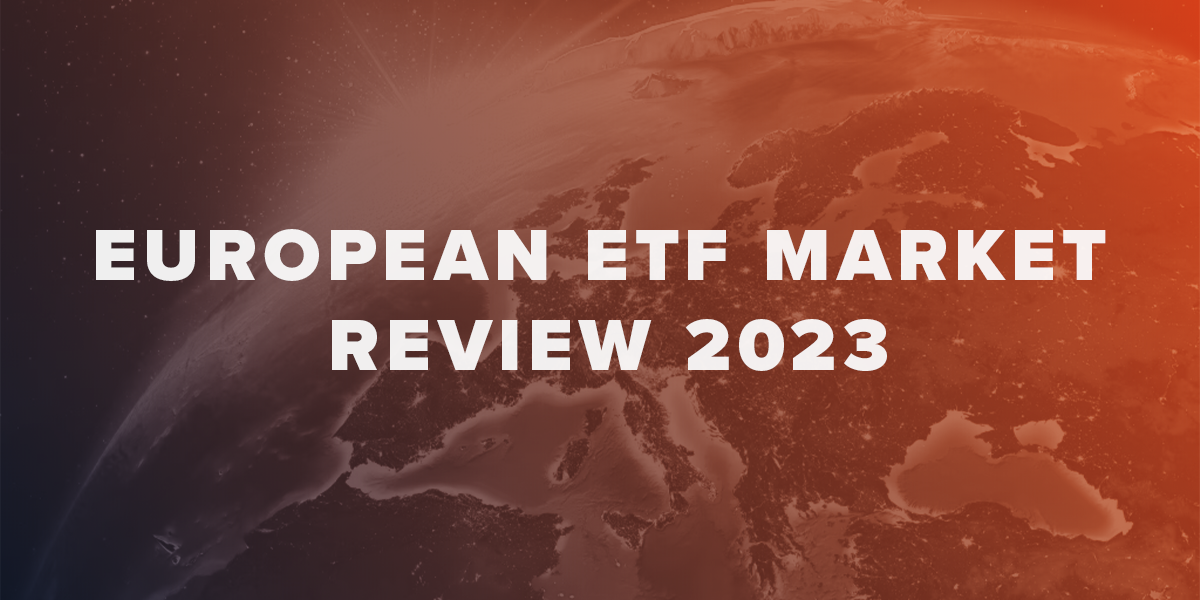The European ETF market has been in full growth mode this year, powered by the return of fixed income as a viable asset allocation play and the rise of retail driving continued growth in core products.
Given market conditions, ETFs saw particularly strong inflows this year. According to data from ETFbook, exchange-traded products (ETPs) in Europe have pulled in $143bn net new assets since the start of the year, up from $67bn net new assets in 2022.
This is in stark contrast to the $100.3bn outflows from active mutual funds in the first 11 months of the year while index funds saw $33.6bn inflows.
The role of ETFs in accessing the bond market has been a key driver behind the flows. Fixed income ETFs have accounted for 45% – or a record $65bn – of all ETP flows this year, punching above their 23% market share of assets under management (AUM).
The spike in yields towards the end of last year following the Federal Reserve’s aggressive hiking cycle has created significant opportunities in government bonds.
Duration positioning has been one of the key focuses for fund selectors this year, with the shorter end of the curve providing the most protection as central banks continued to hike rates.
Furthermore, the dramatic rise of retail ETF adoption in recent years has helped drive even more inflows into core building blocks such as the iShares Core MSCI World UCITS ETF (SWDA) which has seen $8bn inflows this year, the most across all European-listed ETFs.
In October, BlackRock and extraETF predicted the number of ETF savings plans in Europe will quadruple to 32 million by 2028, up from 7.6 million in September, as investors benefit from the simplicity and low-cost structure.
As Christian Bimüller, head of digital distribution in continental Europe at BlackRock, explained: “The pan-European expansion of commission-free brokerage platforms and the adoption of local players is now accelerating the use of ETF savings plans across Europe, bringing investing to millions more Europeans.”
Market structure
From a market structure perspective, the agreement to introduce a consolidated tape for equities and ETFs was the big news in 2023.
The decision from the European Council, Commission and Parliament was for the consolidated tape to include real-time pre-trade data, however, it fell short of venue attribution.
The European Fund and Asset Management Association (EFAMA) predicted a fully-fledged consolidated tape with venue attribution and multiple layers of quotes could drive $1trn assets into UCITS ETFs.
T+1 settlement
The move to a T+1 settlement cycle is the elephant in the room for the European ETF market as the US prepares to make the leap by May 2024.
This means US assets in European funds and ETFs will settle on a T+2 basis on the secondary market and a T+1 basis in the primary market, creating some friction for liquidity providers.
While the EU ETF market may not move to a T+1 settlement cycle until 2029, it has to contend with the Central Securities Depositary Regime (CSDR) which has already added pressure on the market through the fines introduced for not settling on time.
Fragmentation
Fragmentation between the UK and the EU could create challenges for ETF issuers as they deal with a number of regulatory challenges including T+1 settlement, UCITS equivalence, the Overseas Funds Regime (OFR) and the differences between SFDR and SDR.
The uncertainty has meant the likes of Amundi, abrdn, BNP Paribas Asset Management and AXA Investment Managers have been reluctant to register their ETFs for UK investors on their new Irish Collective Asset Management Vehicles (ICAVs).
Overall, the UK ETF market is starting to feel the effects of Brexit as asset managers look to other jurisdictions to launch ETFs such as Germany and Amsterdam.
Unlisted share classes
Finally, the first listed and unlisted share classes arrived in Ireland after HSBC Asset Management converted four global bond index funds to ETFs.
This is one of the key differences between domiciling ETFs in Ireland and Luxembourg as the Commission de Surveillance du Secteur Financier (CSSF) does not require a sub-fund to be labelled ‘UCITS ETF’ if there is an ETF share class.
PIMCO has given itself the ability to implement non-ETF share classes on its range of bond ETFs while Tabula introduced an unlisted share class to the Tabula EUR Ultrashort IG Bond Paris-Aligned Climate UCITS ETF (TUCP) which launched in October.



